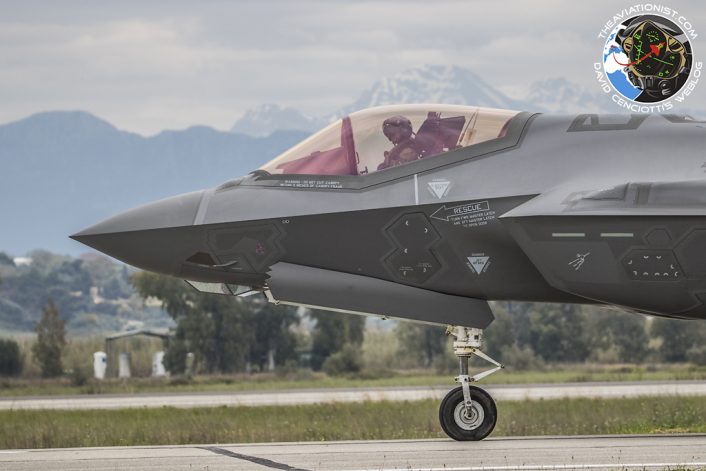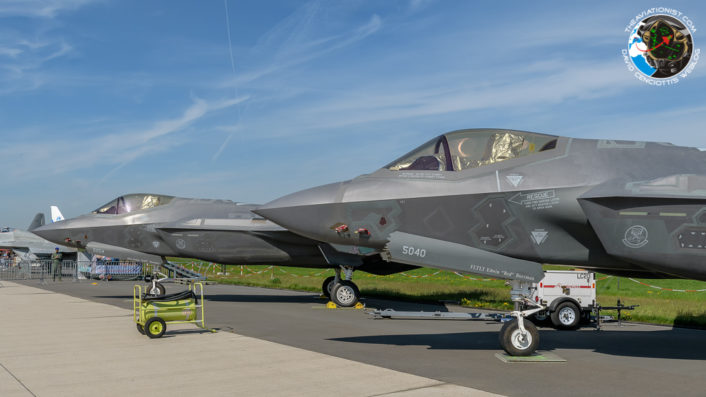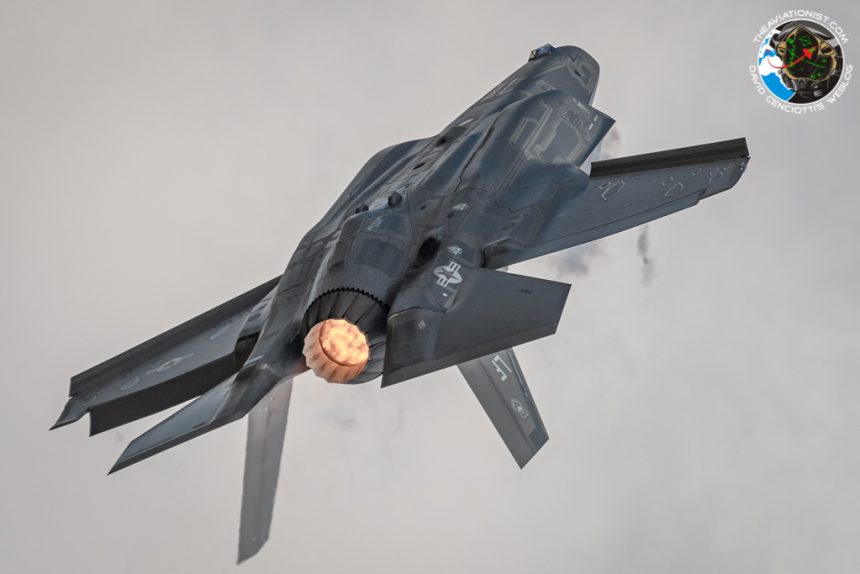Is Poland Getting the F-35 in its Harpia Program?
In early April, Vice-Admiral Mathias Winter, representing the US DoD, suggested, at the House of Representatives, that the US is considering selling the F-35 to five allied nations: Poland, Romania, Greece, Spain and Singapore. Back in February, on the other hand, the head of the Polish MoD signed the so called Technical Modernization Plan document, outlining the priorities that shall be addressed over the course of the modernization process. Given that during the presentation of the plan Błaszczak suggested the procurement of 32 fifth generation fighters is a priority, he was probably referring to acquisition of the F-35 – no other true 5-generation aircraft is currently available on the market.
The analysts suggest that the information is somewhat tied to the tensions between Turkey and the US – so would the aforesaid allies be getting the F-35 that were originally destined to be acquired by the Turkish Air Force? The Pentagon has been somewhat upset with Turkey making a decision to acquire the Russian-made S-400 SAM (Surface to Air Missile) system and hence the resistance in the domain of the fighter procurement.
On Apr. 17, the Polish President, Andrzej Duda, expressed his hopes with regards to the F-35 procurement. During an Easter meeting with the soldiers held at the 1st Airlift Base in Warsaw, Duda emphasized the need to replace the post-Soviet jets (MiG-29 and Su-22) so that the Polish Air Force could operate the best aircraft available in the world now, Duda said.
The meeting was also attended by the head of the MoD, Mariusz Błaszczak, who named the F-35 a key to success.

The first claims made with regards to procurement of the F-35 by Poland were made in 2008. Back then the pricetag associated with the Lightning II was too high though. However, as 395 examples are already in service, the scale effect dramatically lowered the procurement cost. This is exemplified by the Belgian case: Belgium would be getting the F-35 paying 89 million dollars a piece, training and spares included. The Belgian Air Component is planning to acquire 34 jets for USD 4 billion.
Meanwhile, Lockheed Martin representatives assured the Polish media that the F-35 could be received by Poland as early as in 2024, if the contract is signed now – which is a very tight procurement timeline. Such claim has been made by the Vice President of the Lockheed Martin company, Richard Edwards, according to Gazeta Wyborcza.
The priority shift within the modernization program undertaken by the Polish military could also have been caused by a matter that is visible to everyone, but not everyone talks about it. Here we are referring to the deteriorating shape in which the Polish Air Force finds itself in, namely when it comes to the maintenance status of the MiG-29 and Su-22 airframes. The spares for those need to be sourced, often indirectly, from Russia. Considering the fact that the Polish foreign policy disregards Russia as a credible partner, the steps made to acquire western armament are somehow logical.
The drive and motivation related to acquisition of the F-35 could also stem from the fact that Poland has cancelled or resigned from most of its SIGINT/IMINT programs, and thus the F-35 is viewed as a quick remedy filling in this capability gap.
However, the basic assumption made in the Harpia program was to make this procurement a competitive process, involving more than one bidder. Originally, the technical dialogue procedure, preceding any military procurement in Poland, involved more bidders, including Boeing (offering the F-15 and F/A-18), Saab (Gripen platform), Lockheed (F-16 and F-35) or Leonardo (Eurofighter). Now it seems that the tender has been already resolved and that the F-35 is going to become the next Polish fighter aircraft. This is a worrying symptom. What’s interesting, the pilots that we have talked to tend to suggest that the F-15X would be a better choice for the Polish Air Force.
Marek Świerczyński, analyst at the Polish Polityka Insight think-tank, suggests that the situation is weird. The Polish officials have cancelled the initial Harpia RFI, now asking solely about the F-35. Head of the Polish Armament Inspectorate, Brig. Gen. Dariusz Pluta, withdrew the previous request, now asking solely about the F-35. Given that procurement would be covered with an amount of USD 5 billion (32 fighters to be acquired), the above circumstances create some doubts in the public sphere. Also, in the light of the fact that the Polish government is focused on social welfare programs, it is also questionable whether 32 jets could even be acquired. Realistically, 16 fighters are much more likely to be procured.
Acquiring the jet is one thing, maintaining it in service is whole another issue. Undoubtedly, the Harpia accelleration has also been caused by the crashes and incidents involving the MiG-29 airframes that have been happening more often lately.
We could have witnessed a similar scenario in case of the Polish ‘Homar’ (Lobster) rocket artillery program that envisaged procurement of new rocket launchers for the land forces. Given that Poland wants to present itself as an ally of the US, the Polish decision makers have decided to acquire the HIMARS system offered by Lockheed Martin (who also manufactures the F-35), disregarding a similar offer placed by the Israeli. In case of the Polish Wisła medium range air defense programme, the US-made Patriot system has been procured. Meanwhile, last week it was also annoounced that Poland would be getting 4 AW101 helicopters for its Navy’s Aviation Brigade element, to act in CSAR/ASW role. All of the aforesaid decisions were made without a more thorough scrutiny.
Noteworthy, Warsaw is currently involved in talks with Washington DC concerning the US military bases in Poland. Powidz airbase near Gniezno is one of the prime examples, with its appearance giving an impression of a US facility rather than a Post-Warsaw-Pact infrastructure.
It is possible, Świerczyński claims, that the upcoming election may also be a cause for acceleration of the Harpia program, as the government is desperate for a success. It could happen that the procurement is officially announced during the Kielce-held MSPO event scheduled to happen in September. MSPO is the largest Polish defence industry exhibition, organized on an annual basis. This year the US is to act as the leading partner nation. Świerczyński suggest then that Mariusz Błaszczak, head of the MoD, is driven and motivated to sign the F-35 procurement agreement before the election. Notably, the PiS (Law and Justice) government has been using the arms procurement argument in its latest election campaign, pointing out that the preceding government run by the PO (Civic Platform) party did not finalize the Patriot and Caracal acquisitions.

Coming back to the matter of the Harpia program – realistically, if Poland really wants to acquire a 5th gen. platform within the framework of the acquisition in question, the F-35 is the only option available on the market now. The F-22 is no longer manufactured and aquiring the Su-57, even though Russia recently suggested that it would be offering it to foreign customers, is simply a ridiculous scenario no one even dares to consider, especially within the current geo-political context.
Still, on the other hand, if Poland really wants to acquire the 5th gen. jet, why not do it in a manner that would at least create an illusion of competition? This would be good for PR of the Polish MoD, showing that the Ministry is capable of carrying out transparent and fair procurement processes.









